How you’re ruining your teeth
The importance of brushing and flossing your teeth is something your dentist will never let you forget. But they also wish you paid more attention to these dental health mistakes that could lead to tooth decay. Here’s what you should stop doing.
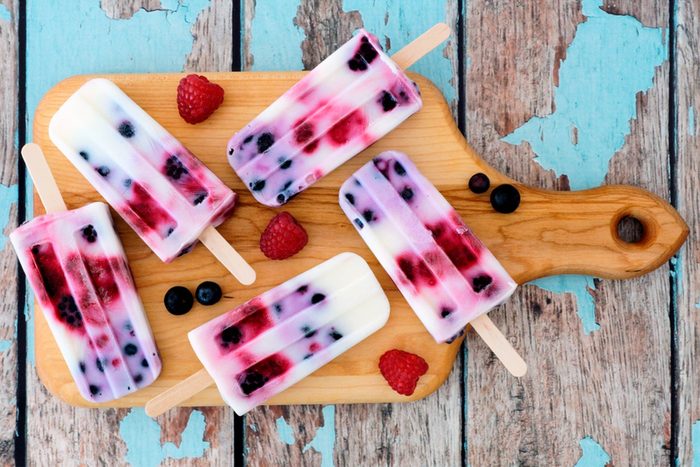
Chomping on ice
There are so many habits dentists wish you’d change when it comes to taking care of your teeth. But one of the biggies? Chewing ice which can chip away at fragile tooth enamel. “It can also crack teeth already weakened from restoration work,” says Harold Katz, DDS, who holds degrees in dentistry and bacteriology. Instead of chomping on ice cubes, ask for crushed ice if this is a habit you just can’t quit and know this: A cracked tooth may lead to an exposed tooth nerve that might even lead to a root canal. (Be aware of these things that your dentist needs you to start doing differently.)
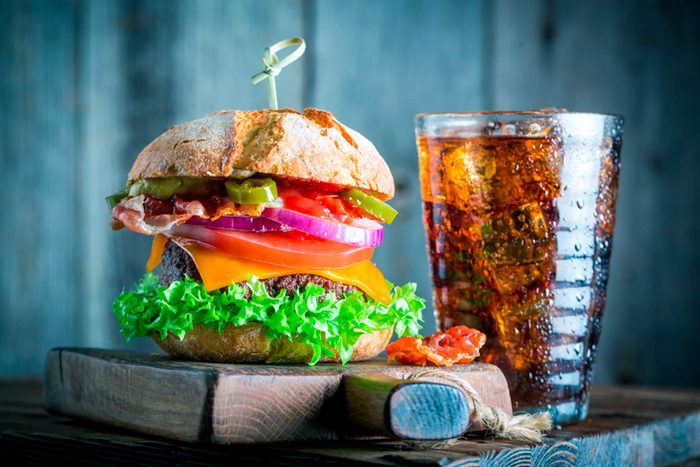
Putting your teeth through a temperature rollercoaster
There’s something about pairing pizza and a cold drink—whether that’s a soda or beer—that seems like a great idea but can also set your teeth up for trouble as the hot temp expands your tooth enamel and the cold temp contracts it. “Eating hot and then cold foods won’t damage teeth per se but many people will notice exaggerated sensitivity with this combo,” says Leslie Renee Townsend, DDS, regional dental director for the Jefferson Dental Clinics in Dallas of tooth sensitivity that affects about 45 million people. “Keep in mind that a shooting or sharp pain while eating or drinking is a sign of a much greater problem such as a cracked tooth or advanced decay—this isn’t something you should ignore.” One solution: Consider eating your pizza with a knife and fork and blowing on it first to tone down the temperature.
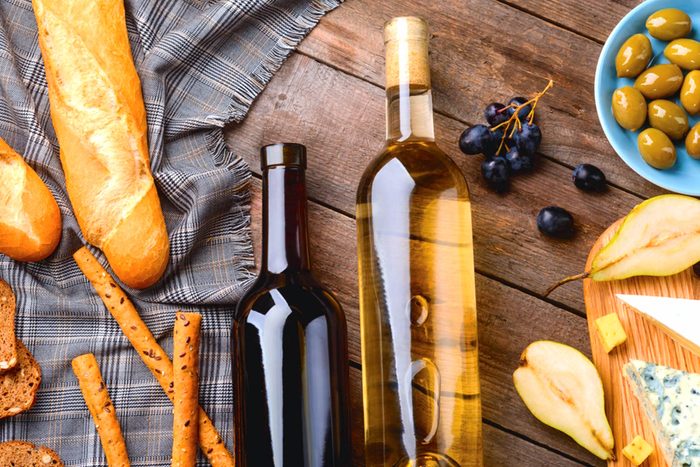
Reaching for certain drinks
Certain drinks are more apt to stick to your teeth and erode enamel and this list includes sports drinks, sodas and wine. “In fact, wine tasters and sommeliers are known to have incredibly eroded teeth because of the high levels of acidity in wine,” says Anna Jotkowitz, a dental surgeon and instructor at Harvard Dental School. One solution: Pair your wine with cheese to minimize the damage caused by wine’s acid, says David Genet, DMD, a periodontist in Aventura, Florida. (This is the most efficient way to keep your teeth clean without brushing them.)
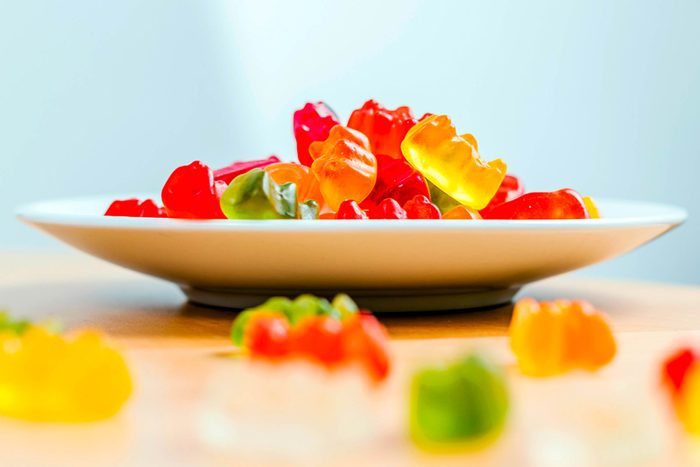
Dipping into the caramel (and gummy bear) bag
Sticky candies like caramels and gummy bears can not only dislodge fillings but they can get stuck in and around your teeth. “These candies can lodge in the natural grooves of the teeth which makes them even more likely to cause decay,” says Jotkowitz. Tip: If you just can’t quit your Swedish Fish habit, always brush, floss, and rinse right after eating them.
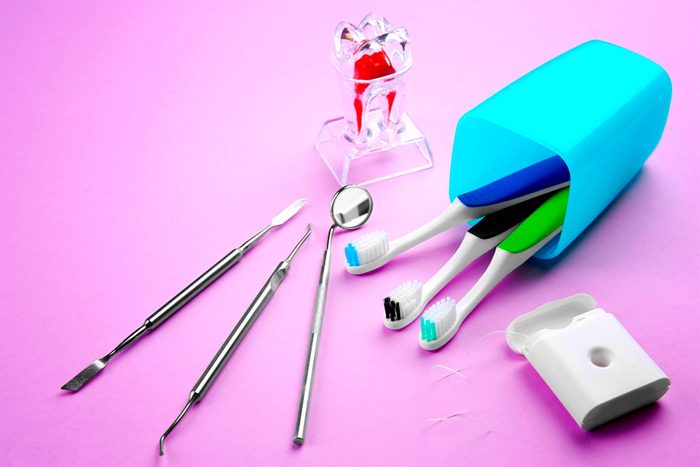
Aiming for the whitest smile
Over bleaching and over whitening using over-the-counter kits can end up being quite damaging to our teeth. “It can lead to enamel loss and therefore prompt permanent tooth sensitivity,” Katz says. “Always test the product first and then, if it doesn’t cause sensitivity, follow the directions exactly as written.” And, when in doubt, skip the bleaching products and consider natural whiteners such as cauliflower and, even, strawberries.
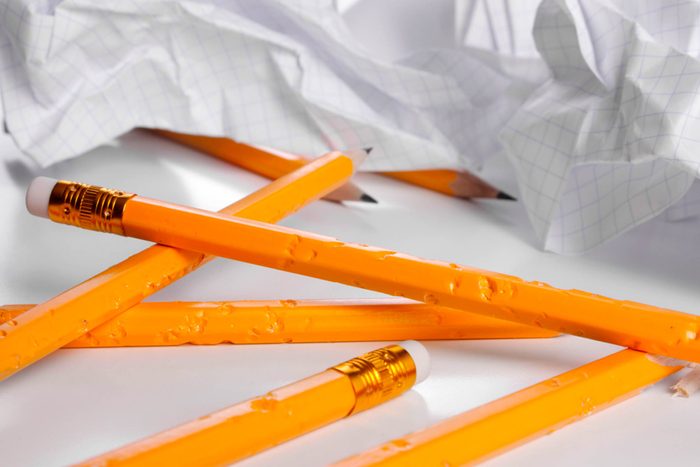
Chewing pencils
It’s a nervous habit we all need to skip—for the sake of our teeth. “You’re not ‘Bucky Beaver,'” Katz says. “This can cause stress fractures to your teeth.” A better option: Squeeze a stress ball during times of stress or munch on a healthy snack like almonds to keep you occupied, suggests Victoria Veytsman, DDS, a dentist at Cosmetic Dental Studios in New York City. Just keep pencils and these things out of your mouth.
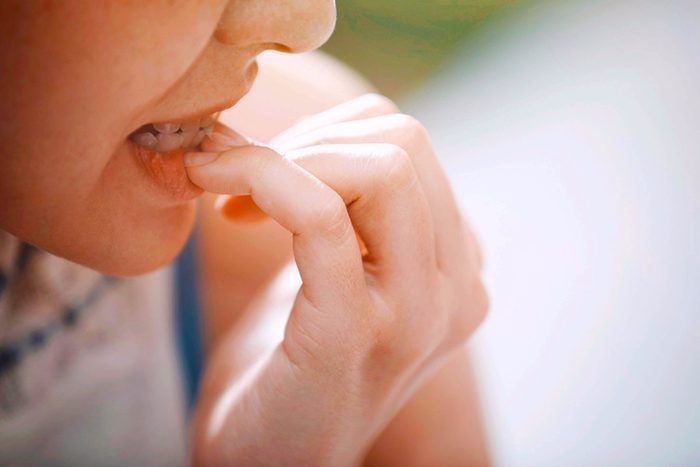
Using your teeth to rip things open
It’s tempting to use your teeth to nibble your nails, rip price tags off clothing, or open a bag of chips, but you’re putting your teeth at risk. “You may even chip your teeth doing this,” says Mehdi Karimipour, DMD, a dentist in Shrewsbury, Massachusetts. Use nail clippers and scissors for all of these tasks instead.
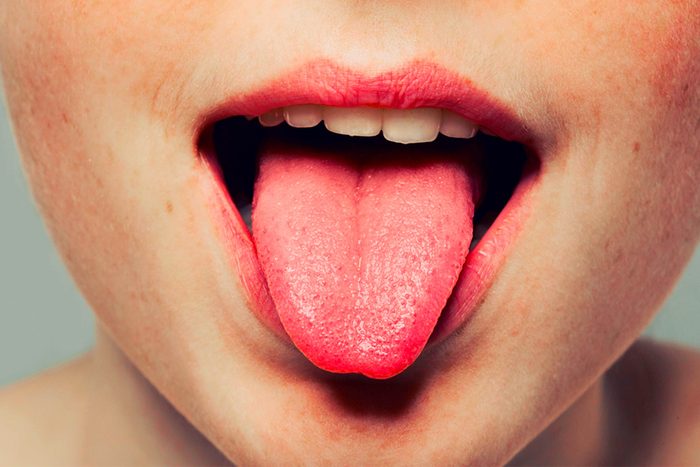
Avoiding proper tongue ‘posture’
By keeping your tongue on the roof of your mouth, you’ll discover that you don’t clench as much. In fact, if your tongue rests properly it can help you relax your jaw. To try this out: Gently rest your tongue along the roof of your mouth similarly to the way it would rest when you make a ‘cluck’ sound.
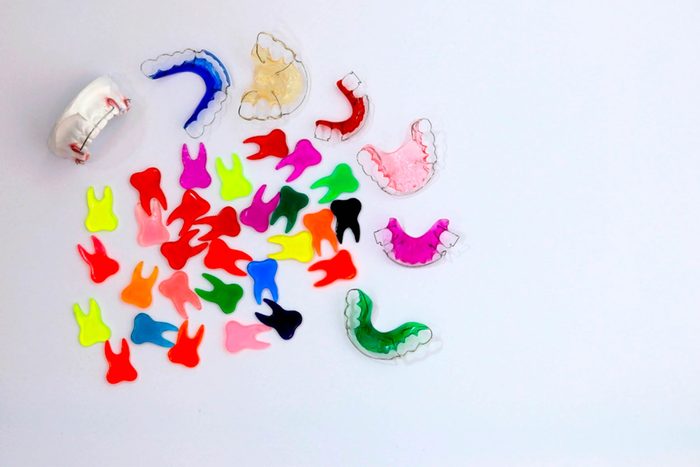
Grinding at night
Your partner may be the one who first tells you that you’re grinding your teeth at night. Or you may wake up with a dull headache or sore jaw. If you think you’re grinding, speak with your dentist as grinding your teeth can lead to serious misalignment of your teeth. You may need to wear a mouth guard at night. Plus, you can lose your teeth when you grind and clench at night.
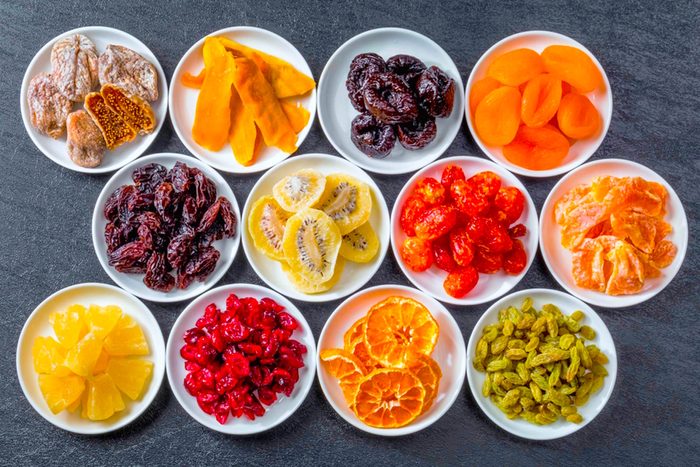
Eating dried fruit
Love raisins? They’re actually one of the worst things for your teeth as they’re sticky and full of sugar. “Sugar feeds the bacteria that creates cavities, bad breath, plaque and gum disease,” Katz says. “Like other dried fruits, raisins remain in the nooks and crannies of your teeth so that bacteria can munch on them all day and night.”
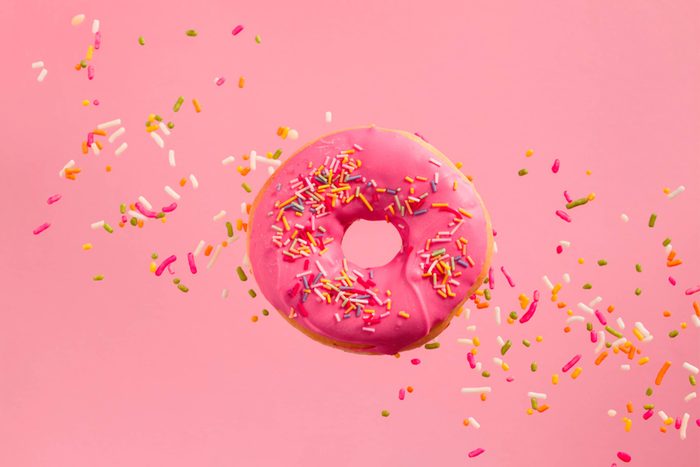
Donuts, donuts, donuts
Yet another reason to ditch the sweets: Turns out sugary foods can prompt the growth of bacteria in your mouth. “This, in turn, can wear away your enamel and cause your teeth to decay,” Jotkowitz says. Craving sweets? Reach for fresh fruits, especially a crunchy apple, instead.
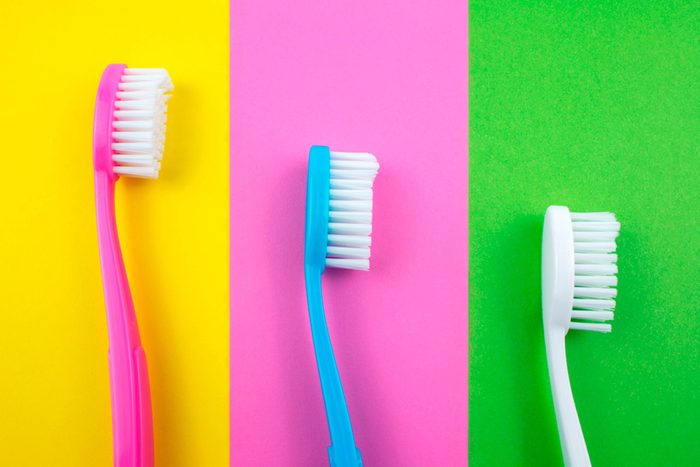
Opting for the hardest toothbrush
When it comes to brushing your teeth, the goal is to use a soft brush—not a hard one (or a spinning electric one used with force) since a rough brush may prompt abrasion or damage your gums. “The wrong brush can literally wear away at the tooth surface,” Jotkowitz says. “Hard brushes have also been shown to destroy tooth enamel and gum tissue creating extreme tooth sensitivity.” Pick out a soft toothbrush instead and brush using gentle circular motions—here are 8 ways you’ve been brushing your teeth all wrong.
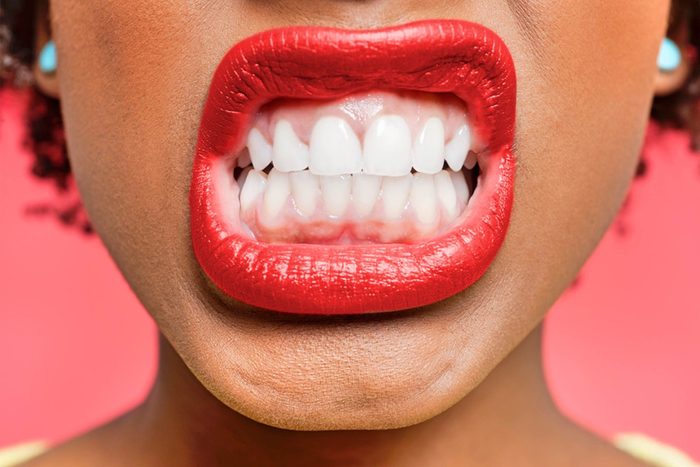
Taking your stress out on your teeth
If you’re clenching at night or grinding during the day, your stress may be taking a toll on your teeth. “Stress contributes to tooth-to-tooth wear,” Jotkowitz says. If you find yourself clenching or grinding, take a moment to meditate (an app like Headspace may help) and consider asking your dentist for a night guard.
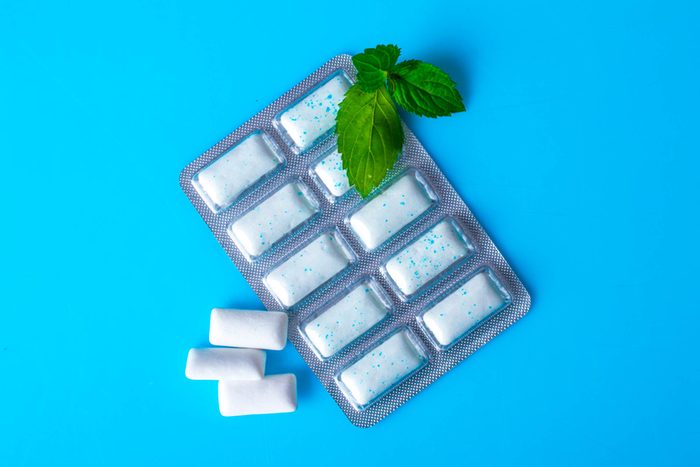
Chewing bubble gum
Those big wads of gum you see all those baseball players chewing when they’re up at bat? Fun to watch but not so great for your teeth. If you’re a gum chewer always opt for a sugar-free variety and reap the benefits. “If you chew sugar-free gum, your mouth will produce more saliva, a natural defense against acid,” Jotkowitz says. “It typically takes saliva around an hour to replace the minerals that your tooth enamel loses after eating. However, you can increase your saliva by chewing sugar-free gum for just 20 minutes after you eat or drink. This will more quickly replace the lost minerals and therefore reduce the risk of decay.” You would be surprised at the shocking diseases dentists find at your annual checkup.
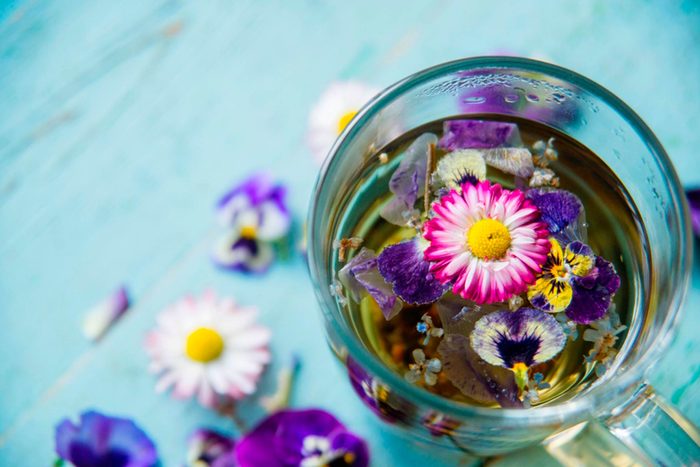
Drinking herbal tea
It’s not just regular tea that can stain your teeth. “Even herbal and white teas can erode enamel and cause staining,” says Genet. “Tea stains teeth more than coffee because it’s full of tannic acid, an antioxidant that quickly adheres to plaque on our teeth causing a yellow discoloration.” If you want to keep tea stained teeth at bay, try some of the best teeth whitening products that dentists actually use.
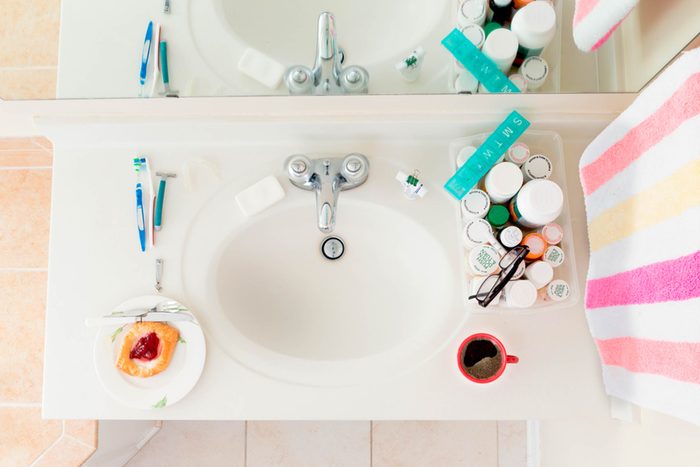
Brushing right after meals
Who among us wasn’t taught to brush your teeth after every meal? Turns out our teeth are weakest immediately after eating, especially if the meal includes acidic foods and drinks, says Sandra Eleczko, DDS, a dentist in Livonia, New York. “The acids in our diet will work on the tooth enamel to weaken and demineralize it,” she says. “Since it can take 30 to 45 minutes for the saliva to re-mineralize and harden the tooth enamel again, wait a bit before brushing your teeth.”
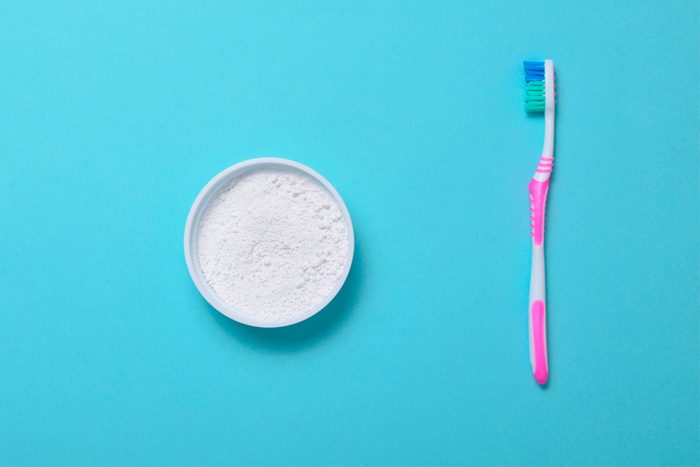
Using toothpaste with chemicals
Opting for a toothpaste that contains sodium lauryl sulfate (SLS) means you’re basically brushing with a harsh detergent that works to create foam, Katz says. “It’s been linked to painful canker sores and dry mouth, too,” he says. Plus, SLS could be one of the things making your teeth more temperature-sensitive. Check the ingredients to find SLS-free toothpaste.
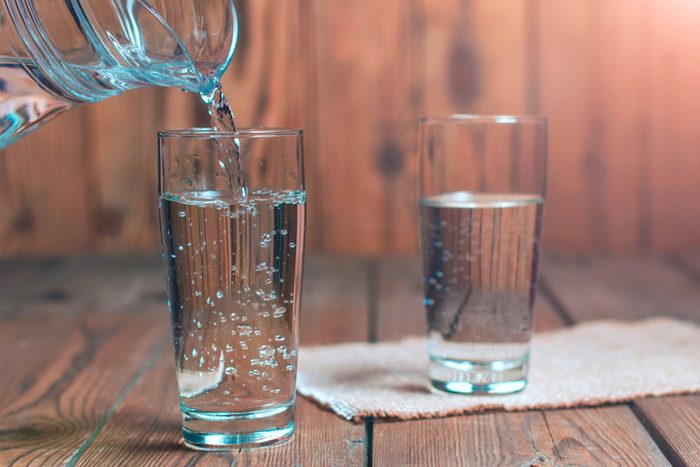
Skipping the H20
It’s not just good for your overall health, but drinking plenty of water throughout the day helps your teeth stay hydrated too. “We use 1.5 liters of saliva daily,” Katz says. “Drinking plain old water is the simplest way to help replenish it.”
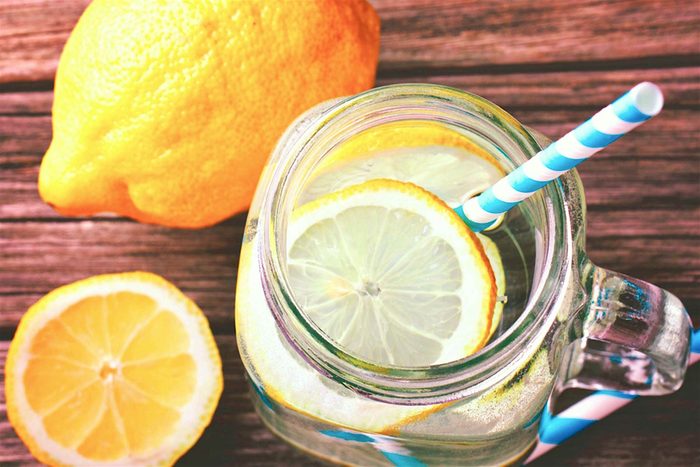
Accenting that water with lemon
This is a refreshing treat that isn’t really helping your smile. “Lemons are extremely acidic,” says Brent Rusnak, DDS, a dentist in Richmond, Virginia. “Although they are great at purifying your body and flushing out toxins, this acid can pose serious problems for your smile.” Tip: If you’re going to drink water with lemon, rinse your mouth with plain water afterwards to try and wash away the acidity from your teeth. Rinsing with water after consuming anything acidic will always help speed along the neutralization process.
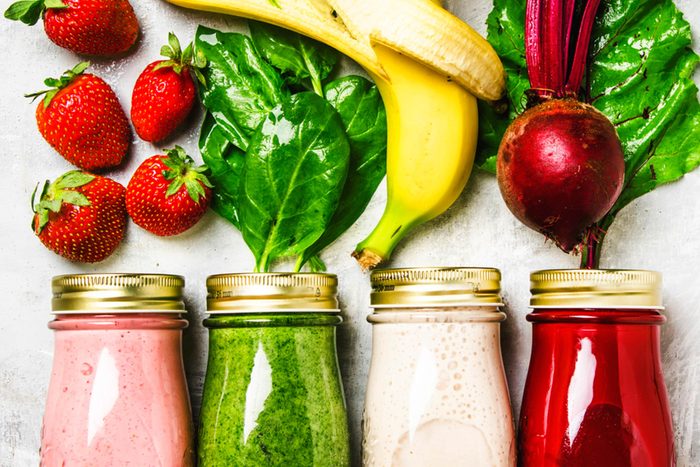
Daily juicing
Juicing is an excellent way to load up on nutrients from fruits and vegetables, but freshly pressed juices are typically loaded with sugar. “This can lead to tooth decay and erosion,” Rusnak says. “If you choose to juice, try to stick to juices made mostly of vegetables, which contain less sugar.” And again, be sure to rinse afterwards.
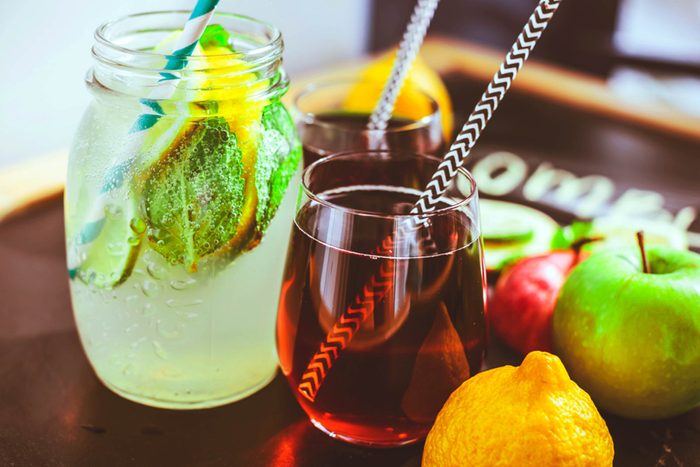
Drinking kombucha
Kombucha, a fermented beverage, is one of the top probiotic foods. But it’s actually pretty acidic, and it can be especially harmful if sipped slowly over a period of time. “If you choose to drink kombucha as a source of probiotics, make sure to drink it in one sitting and rinse your mouth with water afterwards,” Rusnak says. These are the golden rules to white, healthy teeth.
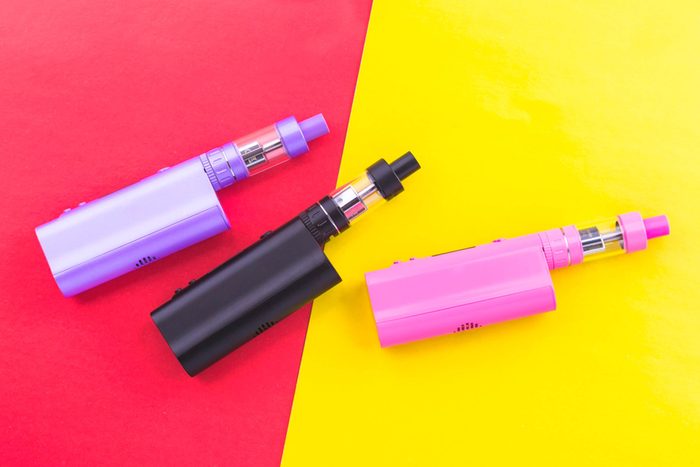
Vaping
Despite the lack of tar, this popularized alternative to cigarette smoking still has incredibly harmful effects on the mouth as nicotine is a vasoconstrictor which, in short, restricts blood flow through the veins, explains Townsend. “Restricted blood flow to the gums kills the gum tissue causing noticeable tissue and bone loss in the mouth and around the teeth,” she says.
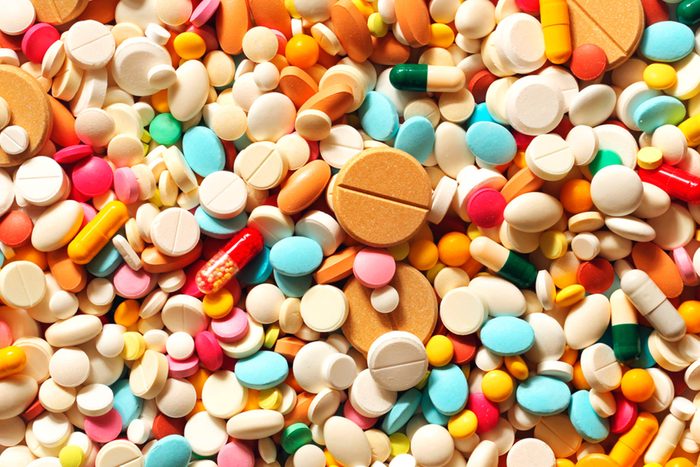
Using certain Rx and supplements
Unexplained chronic dry mouth and tooth decay are often overlooked side-effects of hundreds of medications and supplements, Townsend says. “Often patients will continuously develop cavities or experience worsening oral health conditions all due to restricted salivary flow,” she says. “Saliva is crucial to maintaining oral health by rinsing the teeth and rebalancing pH in the mouth.”
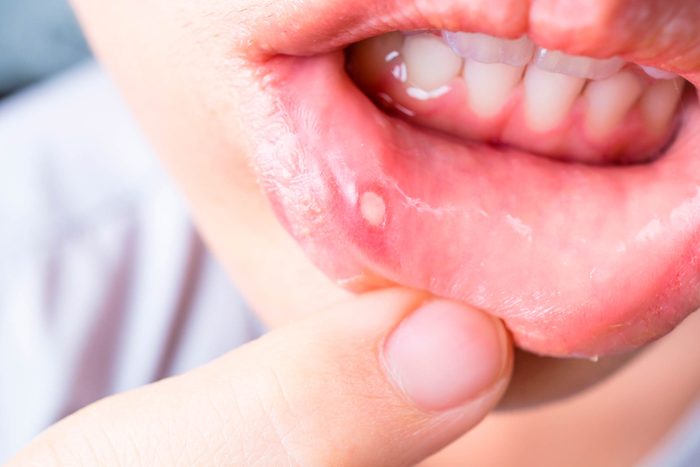
Ignoring symptoms
Swollen gums, blood in the saliva, bad breath, changes in bite and lumps and bumps in the mouth are just a few examples of often ignored signs that can elude to a more serious condition, explains Townsend. “Never hesitate to visit a professional and ask questions,” she says. “You could save not only your teeth, but your life!” Are you up on the cavity symptoms that require a dental visit, stat?
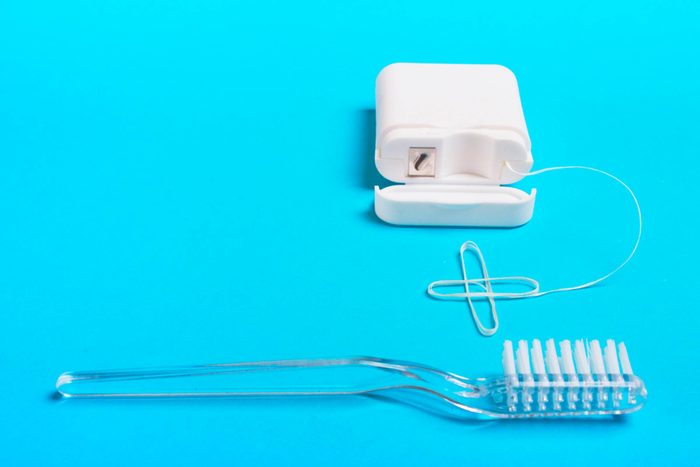
Being inconsistent about brushing or flossing
If you’re inconsistent about brushing or flossing, or only brush once a day, you can end up with tooth decay, bad breath, and gum disease. “It is also possible to brush too frequently, a practice that can strip the enamel from your teeth,” Townsend says. “Twice per day is adequate, three times if you prefer to brush after lunch.”
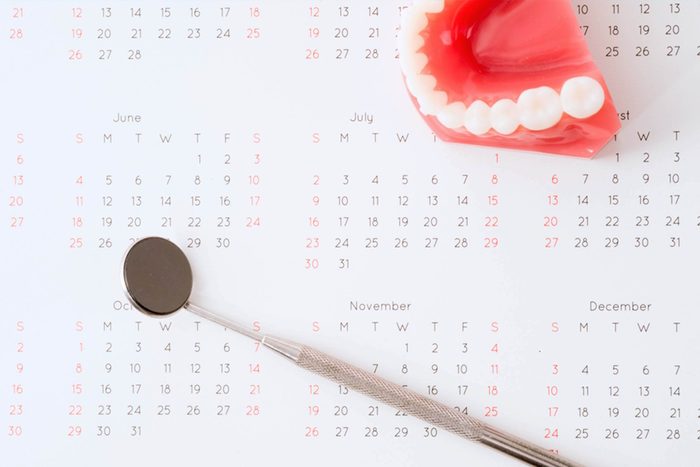
Skipping the dentist entirely
It’s no surprise that multiple university studies suggest that as many as 75 percent of Americans experience some level of fear when it comes to dental treatment; around 15 percent suffer such severe dental anxiety that they skip regular annual visits. However, it isn’t in your mouth’s best interest to miss those twice-annual dental appointments. “These serve as a first line of defense to screen for tooth decay, oral infections, gum inflammation, and cancers,” Townsend says. “These are also a time to discuss changes in salivary flow, bite, teeth alignment, pain or sensations, lesions and other common symptoms.
Delaying detection and treatment of oral health issues is probably one of the biggest health gambles that you can take.” Tip: If you suffer from dental fear or anxiety, talk to your dentist so he or she can help to create a soothing experience.
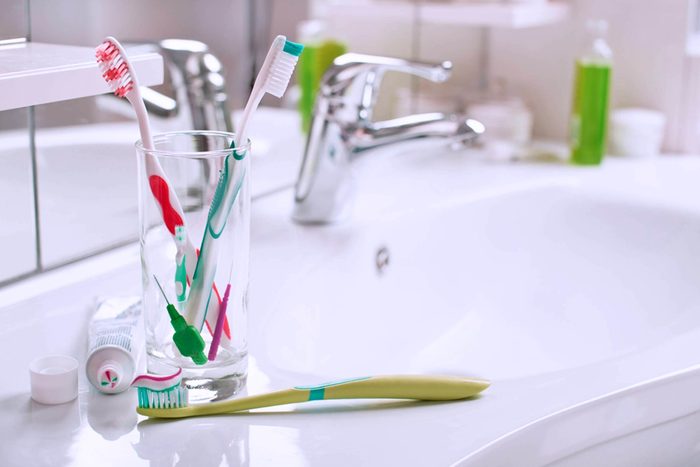
Keeping your toothbrush some place unsanitary
Portable toothbrush holders are a less than tidy way to store your toothbrush. “Bacteria thrive in wet, and particularly warm, environments,” Townsend says. “Storing your brush in a holder immediately after use creates an environment where bacteria thrive, since bristles never dry out between uses. Moreover, wet brushes also have the propensity to grow mold which can make you extremely ill.” Instead, store your toothbrush in a cup away from the toilet, and be sure that the bristles don’t touch those of a family member, since bristle-to-bristle contact can spread bacteria.
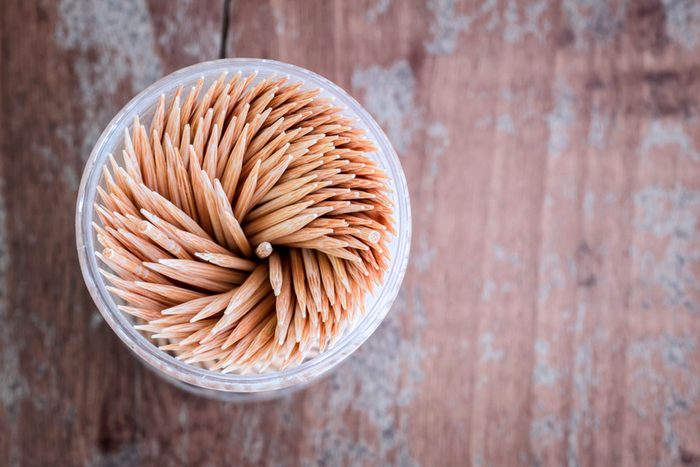
Using a toothpick
This habit—if done occasionally and gently—isn’t so terrible to help dislodge large particles from between the teeth. “But never use a toothpick as a replacement for dental floss,” Townsend says. “If used with too much force, toothpicks can be extremely damaging to the gums and abrasive to the base of the teeth.” In addition, you run the risk of having pieces break off or risk having a splinter caught between your teeth. Your better bet: Pack a floss pick to gently clean spaces between your teeth.
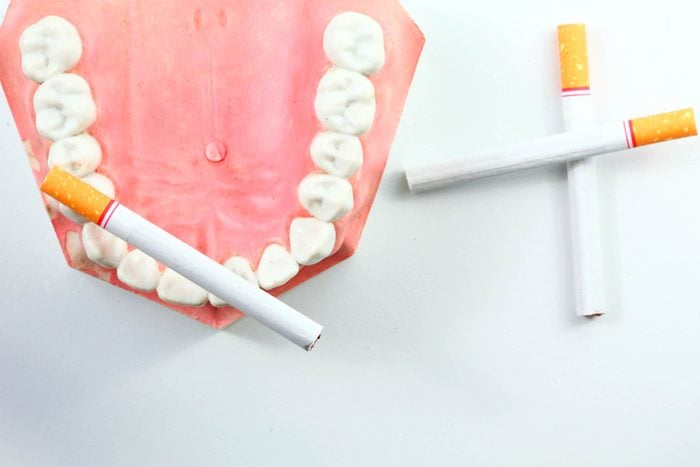
Continuing to smoke
The immediate effects of smoking are bad breath, tooth discoloration and buildup of plaque and tartar on the teeth. “Habitual long-term smokers can experience a range of alarming effects including loss of bone within the jaw, inflammation of the salivary glands, increased risk of developing leukoplakia which are grey or white patches in the mouth, an incrementally higher risk of developing gum disease, high risk of tooth loss and a disturbingly increased risk for oral cancer,” Townsend says. In addition, smoking breaks down the soft tissue and bone that anchor teeth in the jaw.
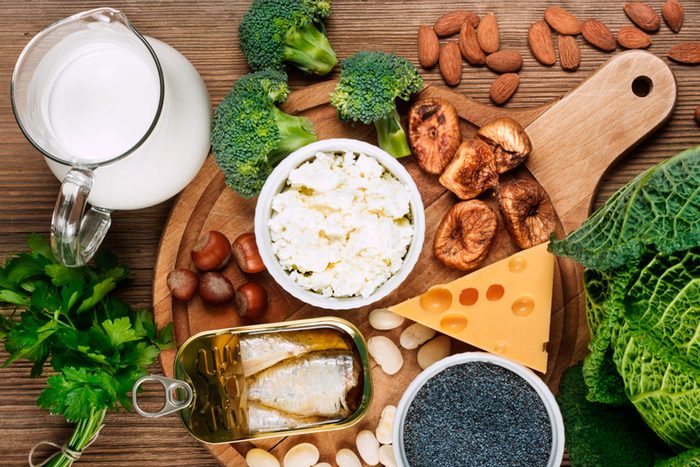
Falling low on calcium and vitamin D
Calcium and vitamin D work in tandem to fortify your teeth and prevent bone loss. “Calcium is critical to the formation of your teeth and jaw bone and a deficiency of calcium can put you at risk for both tooth decay and gum disease,” Townsend says. “Vitamin D is instrumental in helping your body absorb calcium, reduces the risk for developing cavities and can also lower the rate of bone resorption. Vitamin D is also an anti-inflammatory which can aid in reducing effects of periodontal disease.” If you’re found to be low in either, consider taking supplements or up your dietary intake of both by eating dairy products, leafy greens, broccoli, okra and almonds for calcium and fatty fish like tuna and salmon, cheese, mushrooms, milk and eggs to up your vitamin D. Next, read about the secrets your dentist won’t tell you.
